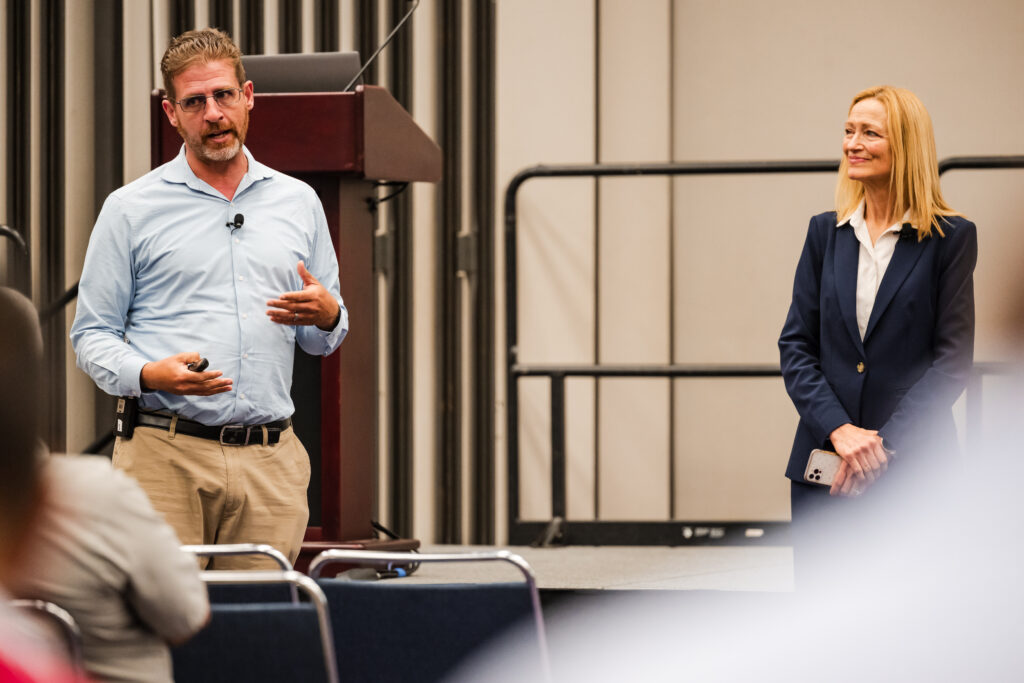Maintenance may be one of the largest controllable expenses in multifamily housing, but that doesn’t mean you have to cut corners. In this fast-paced session, Bubble Gum and Duct Tape? Maintenance Savings the Right Way!, Mary Gwyn (Apartment Dynamics) and Chris Caramanica (WinnCompanies) shared strategies for reducing short- and long-term costs— without resorting to bubble gum and duct tape fixes!
Focus Where You Have Control
A live session poll revealed that most maintenance teams feel they have the most control over deferred and preventive maintenance, but much less over budget and stocking decisions. While budgets and stocking decisions often lie outside a tech’s control, preventive maintenance and make-ready processes are areas teams can influence. A live poll confirmed this: over 40% of attendees said they had the most control over deferred and preventive maintenance.
“Don’t waste time where you have no control. Focus where you do,” said Mary. “That’s where your impact—and your savings—live.”
A Four-Step Fix-It Process
Instead of rushing to “get it working,” Mary and Chris emphasized the importance of following a complete troubleshooting process to solve the problem the right way the first time. Let’s jump into their method:
- Gather Information: Before touching a tool, ask questions. What’s happening? When did it start? Has it happened before? Use all available information, including resident feedback and service history, to build a clear picture. “Don’t guess. Guessing leads to band aid repairs,” Mary warned.
- Define the Problem: Too often, teams jump into repairs with a vague idea of what’s wrong. This step requires specificity. Is it a leak from the faucet or the supply line? Is the HVAC not cooling due to airflow or refrigerant? Clarity here prevents misdiagnosis. In summary, no more “No more ‘I think it’s this.”
- Identify the Cause: This is the step most commonly skipped—and the one that saves the most time and money when done right. Dig beyond the symptom to find the underlying issue. Is a leak caused by corrosion, pressure, or a poor install? Get it right the first time. “You’ve got to stop the cycle of repeat work,” Chris emphasized. “Root causes fix problems. Everything else just pauses them.”
- Repair and Test: Once the fix is made, verify it. Testing isn’t optional. Confirm the problem is truly resolved, and check related systems to ensure no secondary issues were triggered.
“If you’re skipping a step, you’re not solving the problem—you’re just delaying it,” Chris warned. Following this process helps reduce callbacks, minimizes downtime, and improves both resident experience and staff efficiency.

Cut Turnover Costs
Mary then walked the audience through a real-world-inspired scenario to help illustrate how putting numbers into action can lead to significant savings. One of the most impactful areas? The turnover and make-ready process. With the average unit turnover costing around $7,600, reducing just 12 turnovers annually could save a property nearly $91,000. The key, she explained, is implementing a proactive make-ready process, built around these essential steps:
- Do a pre-inspection at notice-to-vacate
- Make a list of supplies, vendors, and parts
- Start work immediately after move-out
- Balance workloads and communicate delays
“Ask yourself: would you move into that unit?” Mary said. “If the answer is no, don’t make someone else.”
What You Shouldn’t Cut
Not all cuts are smart. Here are two areas that should never be on the chopping block:
- Preventive Maintenance: Proactive work prevents bigger issues, reduces emergency calls, and extends asset life.
- Personnel: Cutting staff may seem like a quick cost-saver, but it usually leads to slower response times, more mistakes, and lower resident satisfaction.
Stronger Office–Maintenance Partnerships
Gwyn and Caramanica emphasized that maintenance savings don’t just come from parts and repairs—they come from people working together. One of the most overlooked opportunities for cost savings and efficiency lies in the relationship between the office and maintenance teams. “If your teams aren’t aligned, you’re going to lose time, money, and trust, both internally and with your residents,” said Mary.
They explained that collaboration needs to go beyond the occasional check-in or service request handoff. Instead, teams should develop consistent communication habits that keep everyone on the same page. Daily huddles, shared scheduling tools, and mutual understanding of priorities can transform workflow efficiency.
How the office team can help:
- Use service portals effectively and clarify resident requests.
- Manage purchase orders and vendor scheduling smoothly.
- Communicate proactively through daily huddles or team check-ins.
How maintenance can help the office help them:
- Keep the office informed about priorities, deadlines, and workload.
- Share insights on training needs or areas where callbacks are happening.
Contractor or In-House?
Sometimes, bringing in an outside contractor saves more than doing the work in-house. Chris explained, “A ‘simple’ job done in-house might take 16 hours and cost $400 in payroll. That same job could be $611 with a contractor— in just 4 hours.” The main message: Know the full cost of time, not just the price on paper.
Key takeaways:
- The lowest bidder isn’t always the best; quality and speed can save more over time.
- Spread the wealth across multiple suppliers to build stronger relationships.
- Understand the balance between good, fast, and cheap, and aim for “good and fast,” even if it’s more expensive upfront.
So, What’s Next? Three Immediate Actions
Mary and Chris left the audience with three clear, actionable takeaways for office teams, maintenance teams, and everyone collectively too:
- Office Teams: Work hand-in-hand with maintenance to support preventive maintenance efforts.
- Maintenance Teams: Review orders to identify callback trends, training needs, and cost-saving opportunities.
- Everyone: Price shop frequently, understand the true costs of in-house vs. contracted work, and leverage supplier partnerships for the best value.
Saving on maintenance doesn’t mean relying on makeshift solutions. It’s about being smart, proactive, and working as a united team. With clear communication, thoughtful planning, and strategic vendor partnerships, multifamily properties can preserve their assets, reduce unnecessary expenses, and set their teams up for long-term success.